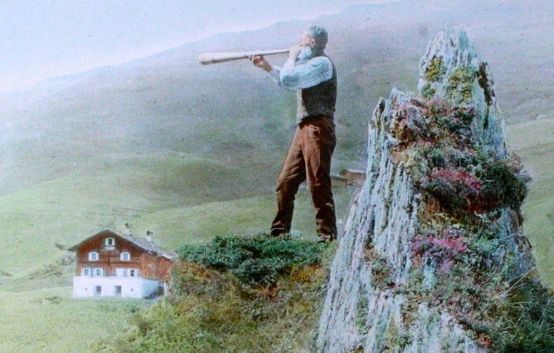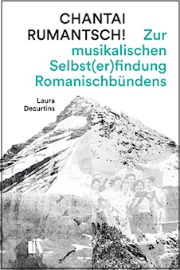The musical DNA of Romansh Canton
In her extensive dissertation, Laura Decurtins has linked the history of Rhaeto-Romanic music-making with the identity of the Romansh-speaking population.

It is a bold and commendable goal that Graubünden musicologist Laura Decurtins has set herself: "I would like to research the 'musical DNA' of Romansh-speaking Graubünden and offer a musical perspective on Romansh-speaking Graubünden." Thanks to a research project at the University of Zurich and the Institute for Cultural Research Graubünden, she was given time and money for her project, and the results of her extensive research have recently been published as a book by Chronos-Verlag under the title Chantai rumantsch! - On the musical self-(in)discovery of the Romansh-speaking region available.
The book is thick and heavy, and the content was accepted as a dissertation by the University of Zurich in 2017: not the ingredients for a light read. And the reviewer's fears are confirmed. It takes discipline and time to do justice to Laura Decurtins' work, which is over 500 pages long. A somewhat bumpy language, many references - the list of sources alone takes up more than 40 pages - and repeated confusing references to names do not make the text any more accessible. But the work is rewarded.
Laura Decurtins links the history of Rhaeto-Romanic music-making with the identity of the Romansh-speaking population. "Musica rumantscha" therefore not only means "music to texts in Romansh", but rather "music by, through, with and for Romansh". Music as part of cultural identity and therefore formative for a society is not a new idea, but has long been neglected by musicology.
The author has divided her book into five main chapters. It begins with the early modern period and sacred singing, continues with patriotic singing and homeland consciousness in the 19th century, then on to choral singing and language consciousness in the first half of the 20th century and on to popular vocal music and new cultural consciousness in the second half of the 20th century. It ends with a chapter on the linguistic and cultural search for identity in contemporary vocal music. Reading the book, it becomes clear how fragmented and small-scale the cultural area of the Romansh-speaking population in Graubünden was and still is. As a representative of the German-speaking majority in Graubünden, it is easy to overlook this. The centuries-old dominance of German as the official language and the transformation of Romansh from a colloquial language to a written language and how this is linked to musical creation is also vividly described. The introduction, with its explanations of how, by whom and when sacred texts and songs were translated into Romansh and how they were disseminated, is extremely interesting. It is also a particular merit that Laura Decurtins deals with contemporary music. This highlights the existing links between Rhaeto-Romanic music from the early modern period to the present day.
Laura Decurtins has compiled a detailed and well-founded reference work on the development and history of Rhaeto-Romanic culture. This historiography has only just begun and will hopefully find imitators. While the first four chapters are notable for their care and analytical approach, the last chapter on the present is too much of a list of biographies of active musicians and institutions, which is neither complete nor reflected upon. This is a pity, as it leaves the question of how Rhaeto-Romanic music and its protagonists are asserting themselves and developing in an international environment unanswered. We are looking forward to the sequel.
Laura Decurtins: Chantai rumantsch! On the musical self(-)discovery of the Romansh-speaking region,
564 p., 57 ill., Fr. 58.00, Chronos, Zurich 2019, ISBN 978-3-0340-1501-1
E-Book (PDF) free of charge








